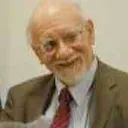Stay in the Loop
BSR publishes on a weekly schedule, with an email newsletter every Wednesday and Thursday morning. There’s no paywall, and subscribing is always free.
It's not all kicks
Carli Lloyd's 'When Nobody Was Watching: My Hard-Fought Journey to the Top of the Soccer World'

Carli Lloyd, author of When Nobody Was Watching: My Hard-Fought Journey to the Top of the Soccer World, says she has never entered the Philadelphia Museum of Art. She has run up the steps 35 times but has never seen the treasures displayed inside.
So why am I reviewing her “written with” autobiography for a publication devoted to the arts?
The athlete-musician connection
Some readers may not know Lloyd’s name. She was captain of the U.S. women’s national soccer team when it won the 2015 Women’s World Cup. She is probably best known to soccer fans for the three goals she scored in the final game’s first 15 minutes.
She’s also a self-styled Jersey girl who starts her book by telling us she was born 14 miles from the Liberty Bell. That qualifies her as a subject for this website, but the real connections between her story and the arts run a bit deeper. Many aspects of Lloyd’s career would probably look familiar to most of the musicians who play in Philadelphia’s orchestras and chamber groups.
The most obvious similarity is the overall pattern of Lloyd’s career. Sports and music have both developed systems that detect potential and see that it’s cultivated.
Most orchestral musicians start taking lessons when they’re younger than six. If their first teacher feels they’re especially talented, they usually move to a higher-level teacher and ascend a ladder of teachers and schools, supported by people who recognize their potential. At the top rung, they audition for places in major conservatories like the Curtis Institute of Music and follow that with highly competitive auditions for seats in big-league orchestras.
Finding prodigies
Lloyd started playing soccer when she was a child and climbed a similar ladder of coaches and teams, from the parents who coached the Delran Dynamite to the highly paid international pros who coach the U.S. national teams. Her auditions were events like the summer regional camps the United States Soccer Federation holds for players under age 13. She came to the attention of the U.S. women’s team through a recommendation from a coach whose team faced hers when she played for Rutgers.
In many fields, not just music and the arts, exceptional talent and exceptional inclination tend to show up early. Future virtuosos often astonish their parents by tapping out tunes on the piano before they’ve taken their first lesson. Carli Lloyd suffered her first sports injury when she cut an eyelid climbing on her mother’s kitchen cabinets.
“From as early as I can remember,” she writes, “I am a kid in motion. I want to be active and to play sports, and I definitely do not mind taking risks.”
She played basketball and softball, “but from the time I start kicking a soccer ball at age five it is my favorite thing to do. One of the greatest thrills of my whole childhood is when my parents buy me my first pair of Copa soccer shoes.”
Talent plus work
Lloyd’s relationship with her parents would probably ring a bell with most musicians, too. Musicians on the whole (unlike writers) seem to have good relationships with their parents. (Somebody has to pay for all those music lessons!) Carli Lloyd’s parents, similarly, had to drive her to games and practices, and served as coaching assistants and fundraisers. In her case, sadly, the relationship disintegrated. Her parents broke with her when she started making major career decisions with which they disagreed.
Don’t read this book if you don’t want to learn a whole lot about soccer. The most fundamental connection between sports and the arts is the old truism that the top people back up lots of talent with lots of hard work. Lloyd’s absolute focus on her career dominates every paragraph. When she discusses other aspects of her life, she talks about their impact on her career. She tells us about her husband (whom she married in 2016), but we mostly learn about his support for her ambitions. A professional golfer, he fully agreed that she should put her career ahead of everything else, including their relationship.
Professional musicians practice several hours a day, whether they’re working or not; so do professional athletes. Lloyd drives to Philadelphia and runs up the art museum steps to vary the rigorous fitness program she maintains in and out of season. She’s still the captain of the U.S. national team, but she’s 34, and most athletes retire before they hit 40. She’ll have plenty of time to look at the pictures.
What, When, Where
When Nobody Was Watching: My Hard-Fought Journey to the Top of the Soccer World. By Carli Lloyd, Wayne Coffey. Houghton Mifflin Harcourt, 2016. 259 pages; $16.33, hardcover. Click here.
Sign up for our newsletter
All of the week's new articles, all in one place. Sign up for the free weekly BSR newsletters, and don't miss a conversation.

 Tom Purdom
Tom Purdom